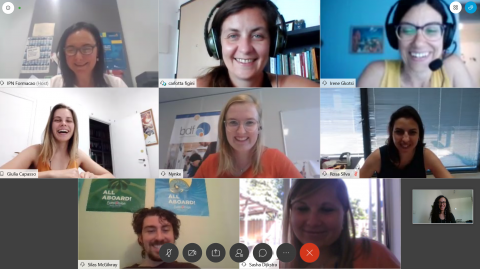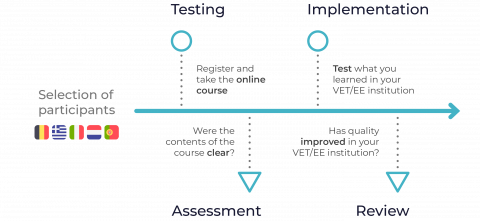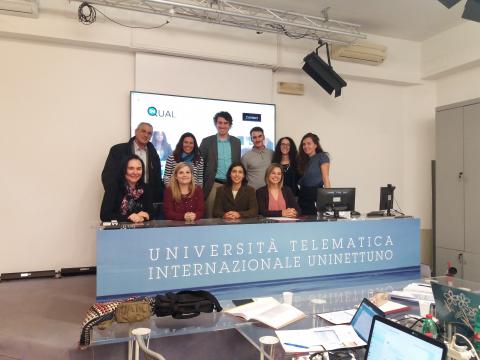3.3 - Staff training
Abstract
You, as QM, need to understand the importance of continuous learning and to organize regular staff
training in cooperation with external stakeholders. Realising the staff training needs and making sure
that all necessary resources are available are the most important steps in planning it. When
examining training needs and educational trends, the organization must:
- consider its current knowledge
- determine how to acquire or access the necessary additional knowledge
- update it
Continuous training is absolutely important for the staff because:
- it is a lifelong learning procedure that supports staff skills
- it improves the quality of the services provided by the VET centre.
Why is this important for you as a QM?
- to clarify that you are responsible for the Business Continuity Plan of the organisation: the staff has to be continuously trained in order to respond to as many teaching challenges as possible
- to keep quality standards in staff training.
- to upgrade learning content and keep all stakeholders satisfied
How should I implement the action?
- In order to identify your staff’s training needs, you can distribute questionnaires and organize focus groups to listen to your staff’s points of view and promote the exchange of ideas. You can also do field research to find out what the market trends are and in parallel to try to identify if there is a specific training need that comes as a priority, i.e improving digital skills in order to work remotely;
- Setting objectives and communicating training opportunities;
- Developing an action plan: programming the agenda (date, time and the content relevant to the organization’s needs);
- Recording full participation of the staff;
- Encouraging staff collaboration during training (in order for final results to be exploited as much as possible);
- Evaluating each course’s impact per participant
How should I know if I have made an impact thus increasing the quality of the VET provision and to which extent? (Indicators also linked with the EQAVET if any):
- the impact it had on the participants; whether they have updated their knowledge and whether it is applied to their work;
- the percentage of satisfaction and complaints indicated by the students, parents etc.;
- your organization’s brand awareness; which basically means promoting VET education to as many stakeholders as possible, i.e recruiting new professionals to work in the organization, linking staff training to the labour market etc.
Links & further readings (includes also third-party resources- videos, etc.):
- Cedefop 2015, Handbook for VET providers [https://www.cedefop.europa.eu/files/3068_en.pdf]. [Last accessed 15/04/2020]
- 2020 project management, “The Importance of Training and Development in the Workplace”, https://2020projectmanagement.com/resources/project-management-training-and-qualifications/the-importance-of-training-and-development-in-the-workplace [Last accessed 05/05/2020]
- Mark Hortsman, 2016. “The Effective manager”, Wiley, 208 pages https://www.amazon.com/Effective-Manager-Mark-Horstman/dp/1119244609/ref=tmm_hrd_swatch_0?_encoding=UTF8&qid=1588670928&sr=8-13



